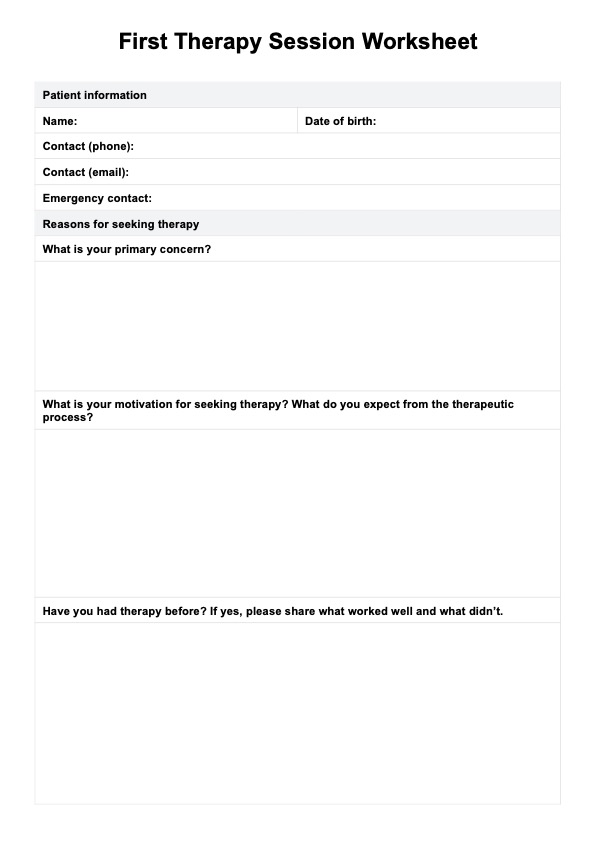In the first therapy session, you’ll explore the client’s reasons for seeking therapy, current challenges, and personal goals. Creating a welcoming environment allows you to collaboratively establish a foundation for future sessions. Be sure to discuss informed consent to ensure the client understands their rights and the therapeutic process.

First Therapy Session Worksheet
Meet clients where they are and support their understanding of therapy with this First Therapy Session Worksheet to create a comforting first session.
First Therapy Session Worksheet Template
Commonly asked questions
Schedule an initial session, where you'll discuss the client's needs, expectations, and the therapeutic process. It's a chance to meet with your client. You can implement these worksheets how you see fit, it can be a good idea to send this document through to your client before that initial session or have them use it during the initial session.
You may ask about the client's reasons for seeking therapy, past experiences, relationships, and emotions. Questions aim to understand the client's background, assess mental health, and collaboratively set therapeutic goals.
EHR and practice management software
Get started for free
*No credit card required
Free
$0/usd
Unlimited clients
Telehealth
1GB of storage
Client portal text
Automated billing and online payments











